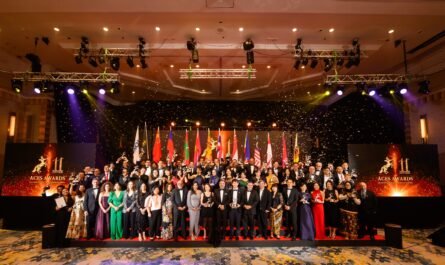
Saudi Arabia is positioning itself at the forefront of green hydrogen production, with its Public Investment Fund (PIF) leading a $10 billion push into the sector. As part of Vision 2030, the Kingdom is leveraging its renewable energy resources—chiefly solar and wind power—to establish itself as a major global player in the emerging hydrogen market.
The Kingdom’s strategic shift towards renewable energy, particularly green hydrogen, marks a significant departure from its traditional dependence on oil revenues, which have historically comprised a substantial portion of the national budget. With Saudi Arabia aiming to diversify its energy portfolio, the ambition is clear: to produce around 4 million tonnes of green hydrogen annually by 2035. Key to this plan is the NEOM Green Hydrogen Company (NGHC), a $500 billion mega-project that is set to house the world’s largest green hydrogen facility, Helios.
The Helios project in NEOM has attracted substantial international attention due to its scale and potential. By harnessing the abundant solar and wind resources of the desert, Helios will operate on renewable energy alone, making it one of the most environmentally friendly hydrogen production facilities globally. It is expected to produce 600 tonnes of carbon-free hydrogen daily, starting in 2026.
This venture is a collaboration between Saudi Arabia’s ACWA Power, the U.S.-based Air Products, and NEOM, with a total investment of $8.4 billion. The financing arrangement, which includes funding from 23 banks and financial institutions, has been hailed as one of the largest green project financing deals to date. The plant will use up to 4 GW of renewable energy to power its operations, further underlining Saudi Arabia’s commitment to decarbonisation.
PIF’s broader green hydrogen strategy complements its growing portfolio of sustainable investments. The fund is tasked with steering the Saudi economy towards more diversified and resilient sectors. Hydrogen is expected to play a central role in achieving the Kingdom’s ambitious goal of net-zero emissions by 2060, and the PIF’s investments are being viewed as critical to realising this objective.
As global interest in hydrogen grows, Saudi Arabia is positioning itself as a key player in the supply chain. The country’s advantage lies in its geography, with its desert terrain being ideal for large-scale solar power generation, crucial for the production of green hydrogen through electrolysis. Unlike blue hydrogen, which is derived from fossil fuels, green hydrogen is produced using renewable energy, making it a far more sustainable alternative.
The NEOM project is expected to transform the region, both economically and environmentally. By creating a new industrial hub centred around green hydrogen, Saudi Arabia aims to attract foreign investment, create jobs, and establish itself as a leader in clean energy technologies. With large-scale projects like Helios, the country could also export hydrogen globally, addressing growing international demand for cleaner energy alternatives.
This investment is part of a broader regional trend. Alongside Saudi Arabia, countries such as the UAE and Oman are also ramping up their hydrogen production capabilities, as Gulf nations collectively strive to lead the green energy revolution. However, Saudi Arabia’s sheer scale and investment in projects like NEOM give it a significant competitive advantage.
The PIF’s role in catalysing this transformation cannot be understated. As the cornerstone of Saudi Arabia’s economic diversification strategy, the fund is funnelling significant resources into projects that align with global sustainability goals. Green hydrogen is one such sector, poised to redefine energy markets worldwide.
With global demand for hydrogen expected to grow exponentially, Saudi Arabia’s green hydrogen ambitions have far-reaching implications. The Kingdom is not only seeking to meet its own energy needs through renewable sources but also to emerge as a major exporter of green energy, tapping into markets in Europe and Asia. Through this, Saudi Arabia hopes to not only secure its place in the future energy landscape but also to mitigate the economic risks posed by fluctuating oil prices and the global shift away from fossil fuels.
The scale of the Saudi green hydrogen strategy is underpinned by a series of high-profile partnerships and contracts. For instance, Larsen & Toubro, a major conglomerate, has been awarded a $2.8 billion contract to develop renewable infrastructure within the NEOM project. China-based Envision Energy will also play a pivotal role by supplying wind turbines with a capacity of 1.67 GW. These developments reflect the global confidence in Saudi Arabia’s green hydrogen potential and underscore the collaborative nature of this massive undertaking.



